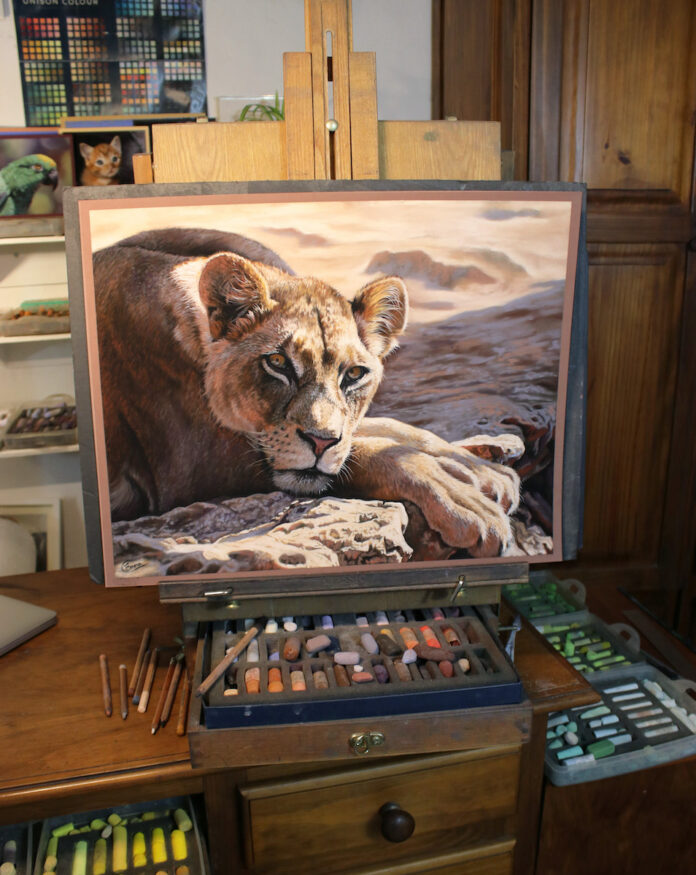Find inspiration and learn pastel painting techniques with today’s featured artist Emma Colbert >
Pastel is the best medium to work with when it comes to portraying fur, says artist Emma Colbert.
Known for the extraordinary realism with which she depicts animal fur and the sensitivity with which she represents their emotions, Emma Colbert will be among the faculty members of the annual online art conference Pastel Live, September 18-20, 2024, with an Essential Techniques Day on September 17.
The artist will return to Pastel Live for the second year in a row and by popular demand after last year’s exciting demo session.
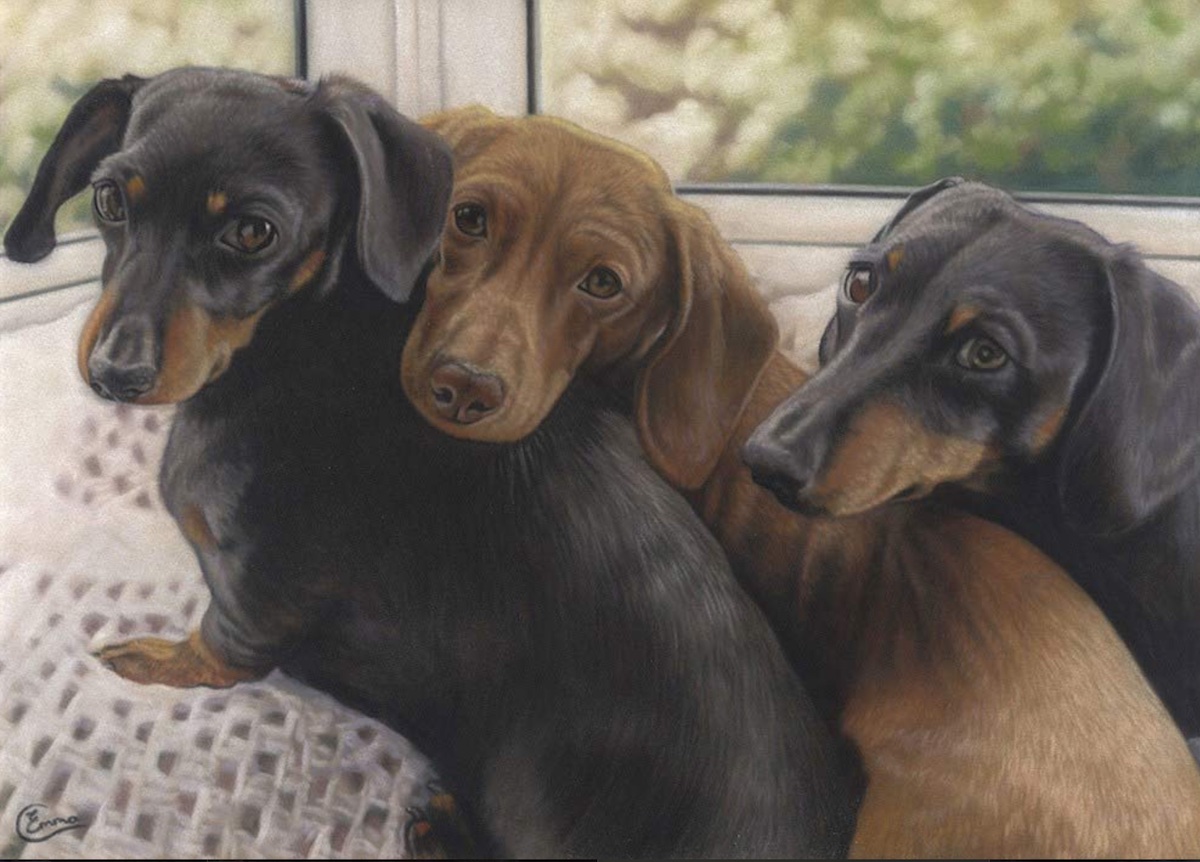
Emma was born and raised in verdant and glorious Ireland, where it is nature that punctuates the circadian rhythms of its inhabitants. In 2007 she graduated from UCA Maidstone, England, with a BA in Illustration.
She began her career with commissioned portraits but in 2014 decided it was time to leave the “dreary” climate characteristic of Ireland and discover new forms of light and creative energy.
She brought with her that ability to “breathe in” the beauty of nature’s elements, now inherent in her, that the Irish atmosphere provides.
She has taken long journeys in the company of her partner Andrew and her beloved dog Brocci, who left them last year. Together they traveled for several years in a motorhome following the lush nature and its disparate landscapes and stopping to live – “for the time being, but you never know,” she says – in southern Spain, where the light “has a charm of its own.”
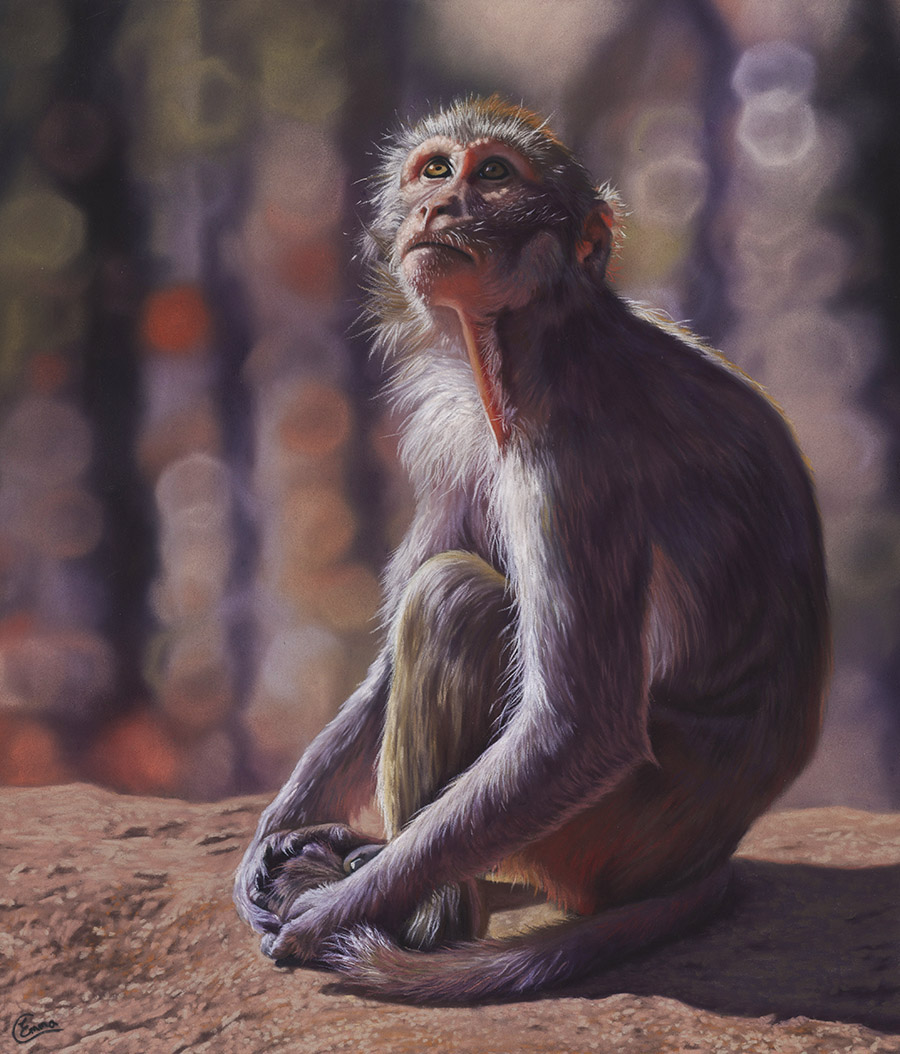
Her boundless love for nature and animals combined with art has made her one of the most sought-after and established artists devoted to pastel painting of the animal world.
Her sensibility has led her to be a brand ambassador for Unison Soft Colour Pastels, which has dedicated a palette specifically designed for painting animals. “I am very grateful to Unison because it has always believed in me from the beginning and has given me the opportunity to grow and improve myself,” she said.
Emma’s passion for art began when she was still a child and looked up to her older sister – 11 years her senior, an academic art student and her first mentor – with admiration. Her sister taught her artistic techniques with rigor and discipline.
Pet portraiture caught her attention and made her realize that this was her path. “It’s really nice because you’re always giving people something that makes them so happy or emotional,” she said.
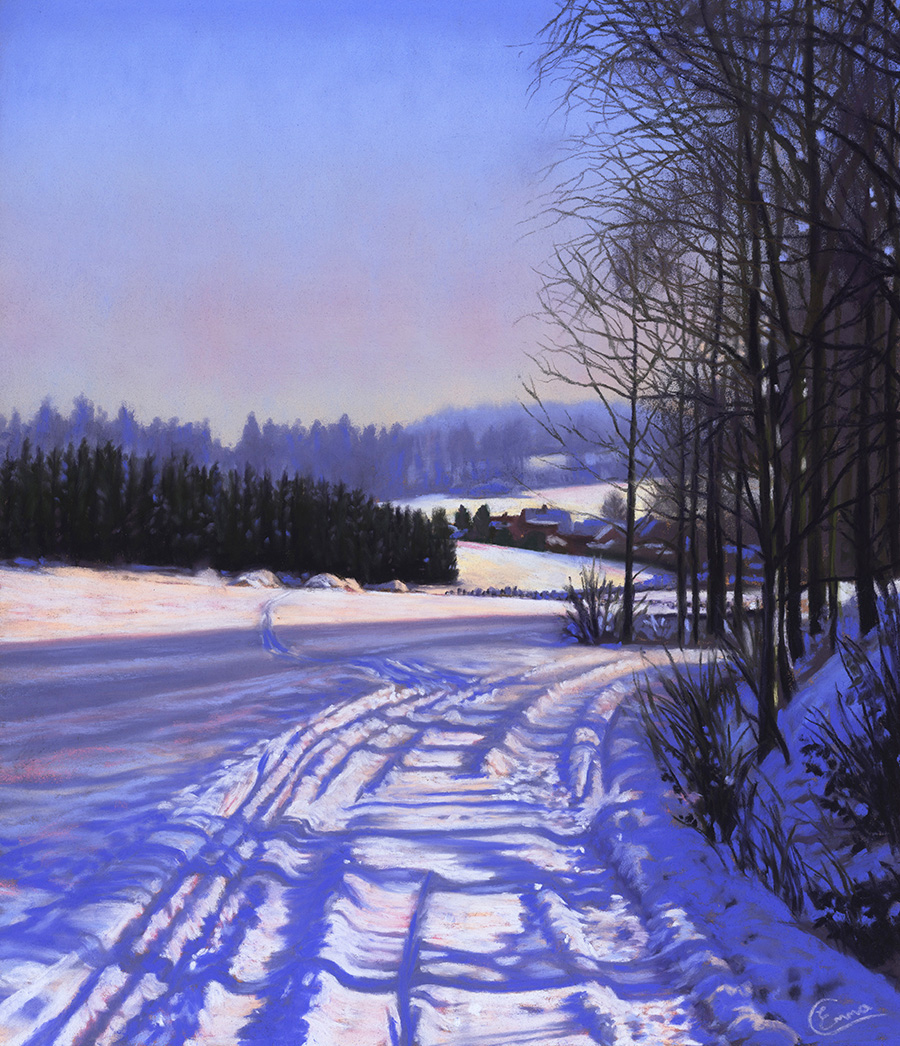
Unlike her sister, who painted primarily in oils, Emma found in pastel the immediacy and brilliance necessary to meet her preferences in the realistic definition of subjects.
“When I first discovered pastel, it ticked all the boxes for me,” she said. “I could work how I wanted to and could layer colours up the way I was able to with the oil paints in a very similar way.”
Her favorite subjects are both wild animals immersed in the extraordinary bucolic landscapes to which they belong and domestic animals, mostly commissioned by their owners to celebrate their faithful friends.
Currently, the artist is not working as routinely on commissions and, in addition to making paintings for tutorials on dedicated channels, has adopted a freer and more vibrant creative approach to pastel painting.
Emma has a special fascination with dogs and cats; she realizes them with an intensity of expression equal to the essence of these animals, so similar and so different. “Percentualizing, I prefer to paint 60 percent dogs – I feel so at home painting them – and 40 percent cats, which by their nature although affectionate, tend to be more independent,” the artist declares.
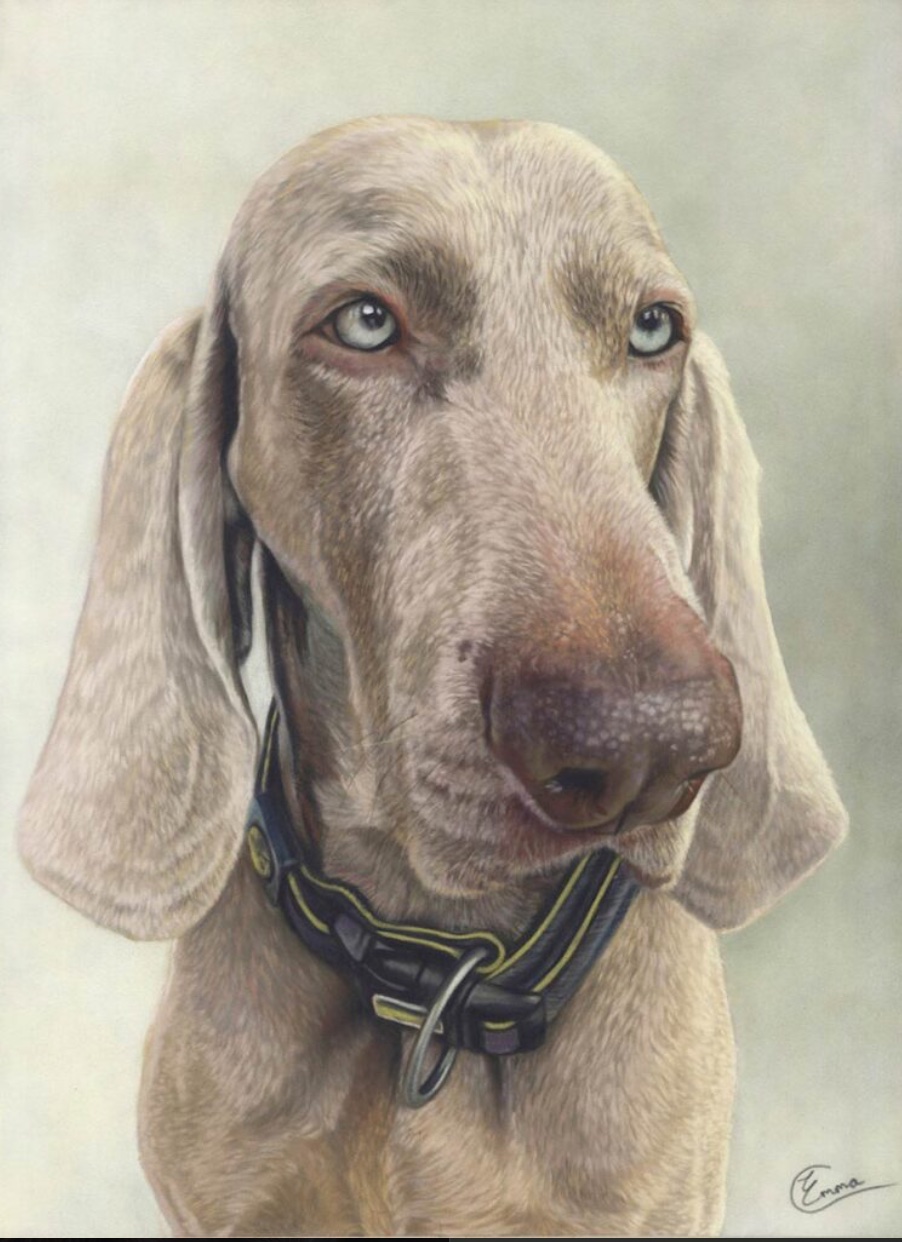
Unlike an ethologist who scientifically studies animal behavior, Emma uses pastels as a means of investigating animal behavior and beauty, which she captures in the myriad shades of fur, different from animal to animal and subject to subject.
The effect of movement with which the artist fixes her subjects on paper, forever capturing an action or an expression is also of particular value because although they are imprinted on paper, they are in perpetual, eternal, movement for the viewer.
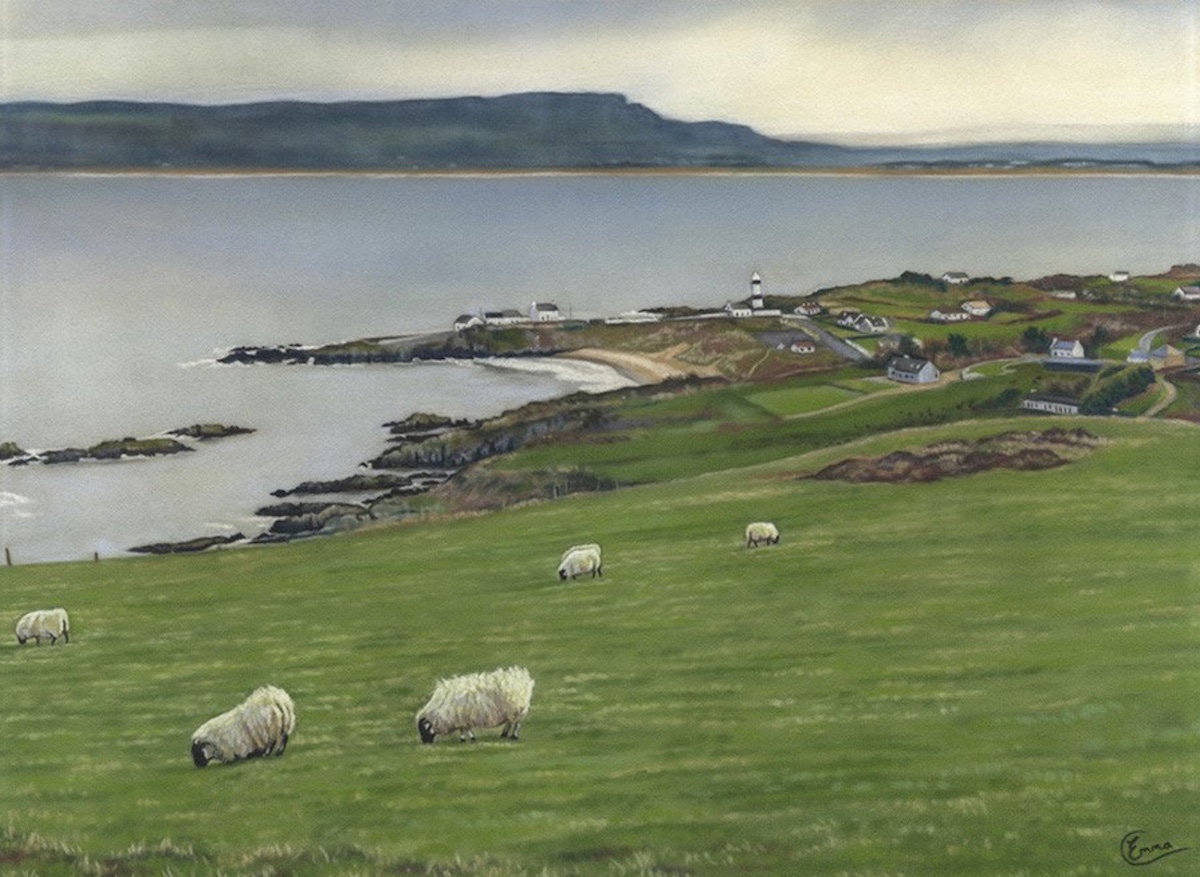
Emma, like an ethologist, creates the animal profile first through drawing – skills the artist considers fundamental to the creation of a credible composition – and then through the use of pastels, which she uses differently depending on the stages of the painting’s creation.
She usually puts pigment on in quite thin layers. Other times, if she wants a very definite mark, she adds it with more pressure. She will rub a layer in and then bring the next layer in so everything gets added and built up gradually.
“Doing it in this way, the surface of it is never overburdened by pigment that could just fall off of your painting,” said the artist, who will offer many interesting tips and tricks on how to paint fur and emotionally rich animals in her demonstration session during the 4th edition of Pastel Live, online September 18-20, 2024.
Discover more pastel paintings and inspiration here at RealismToday.com.


